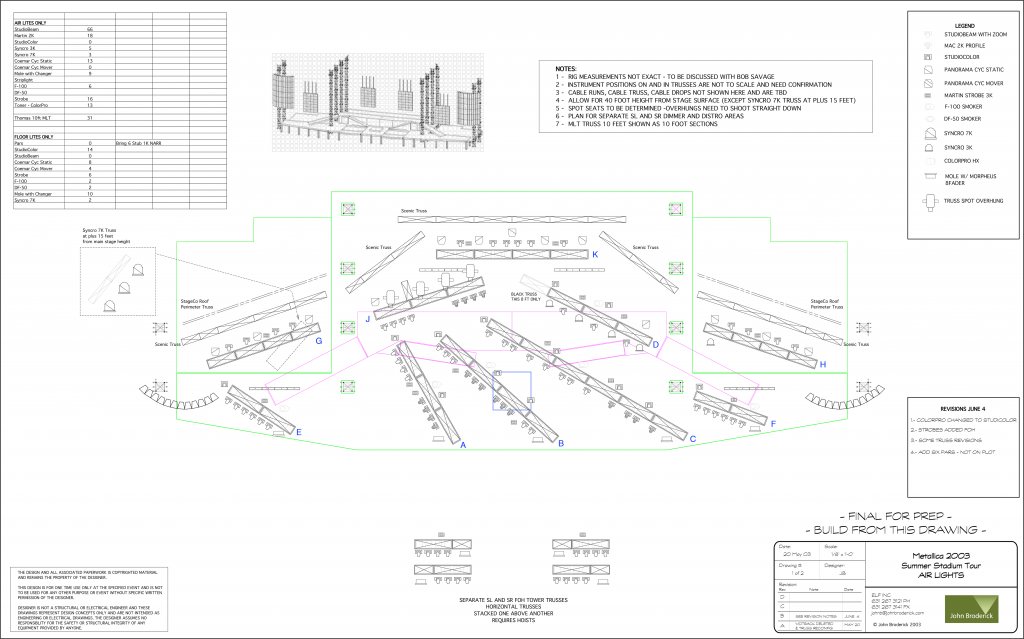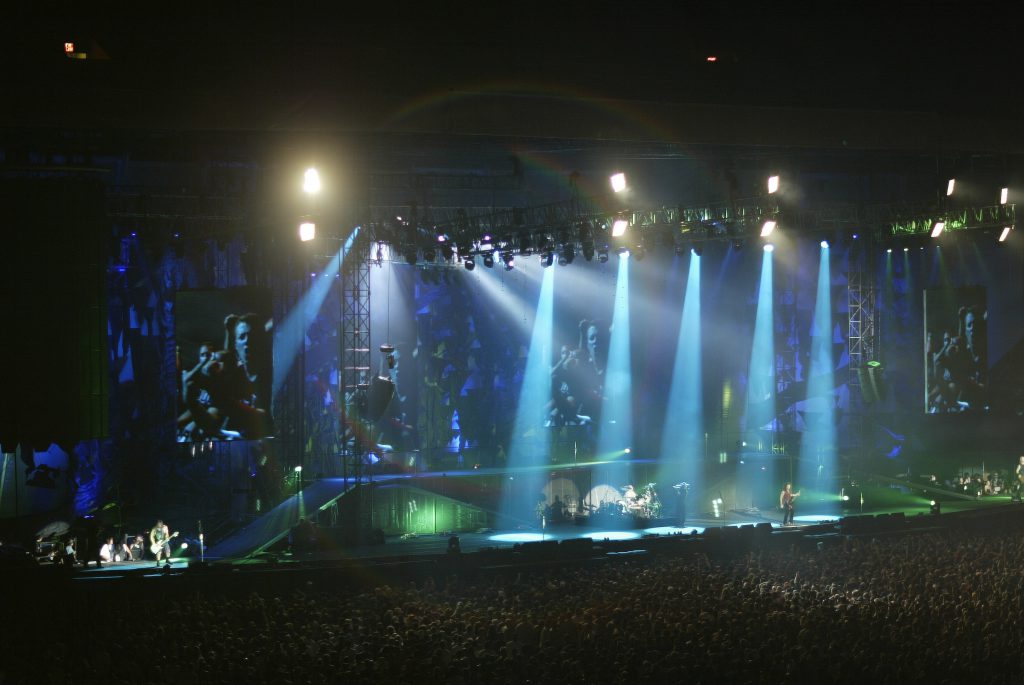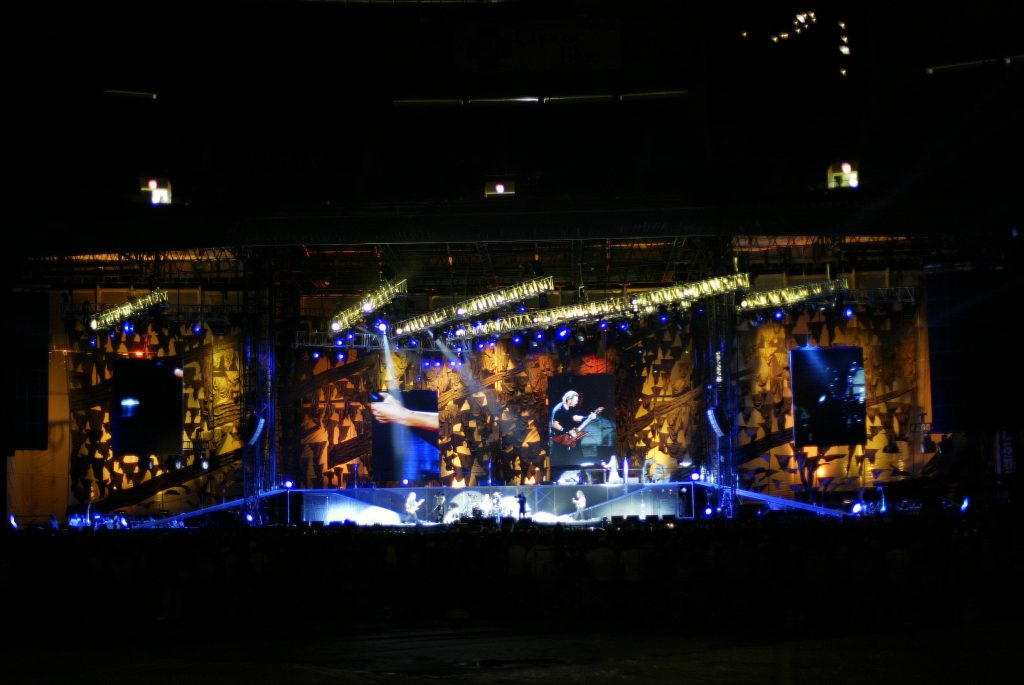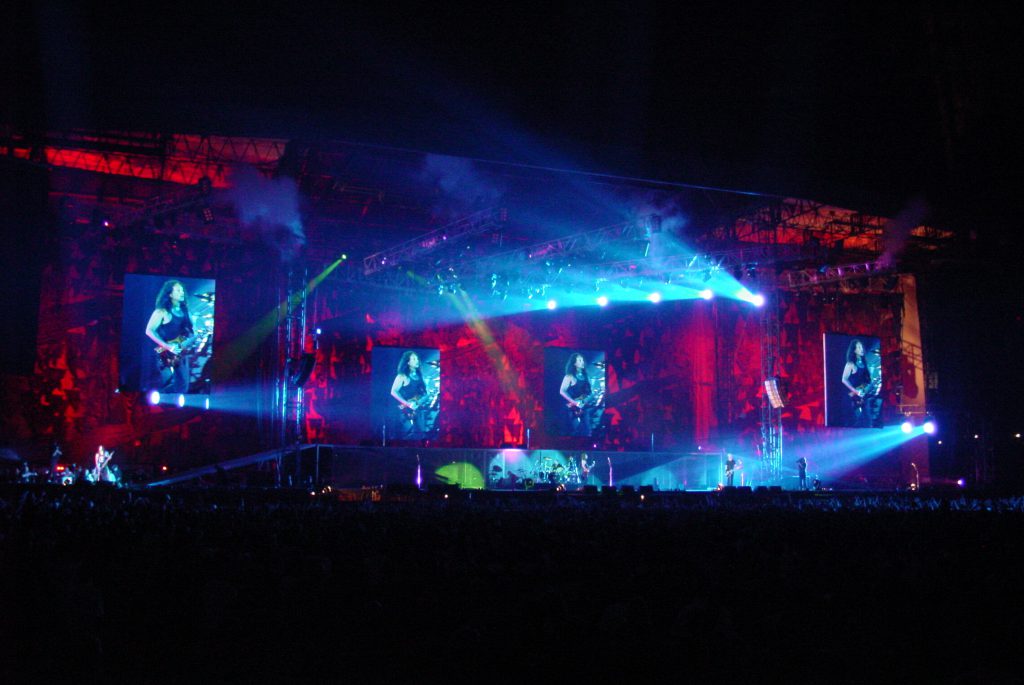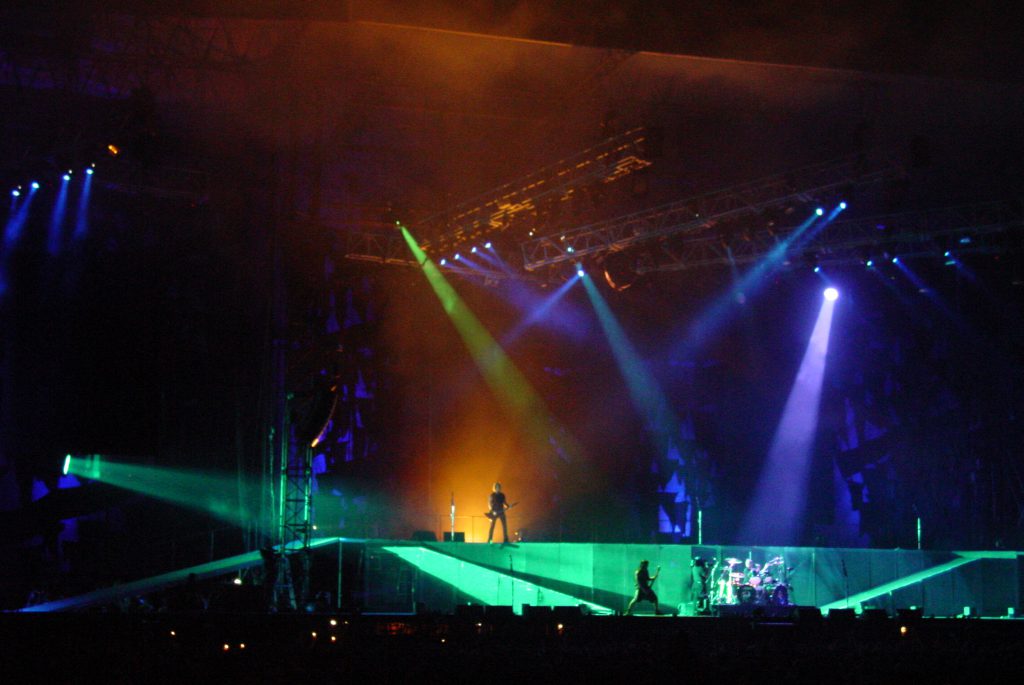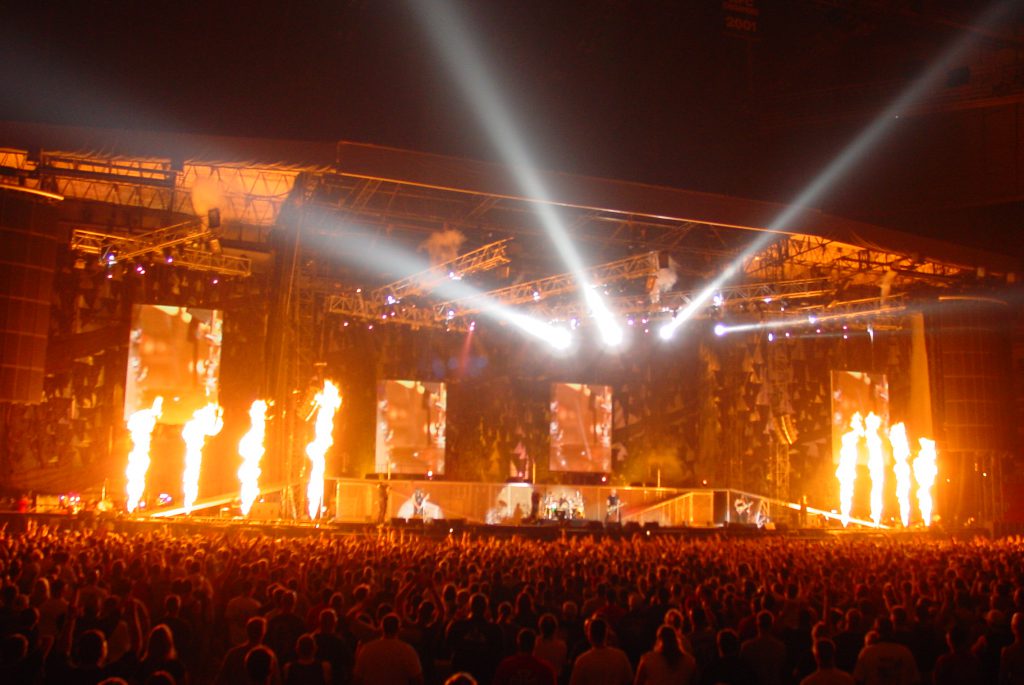Tour Scope
A massive stadium tour that required 250 personnel, three complete outdoor stage tower constructions, two stage sets, two giant lighting systems, two giant sound systems, two complete sets of crew members for the systems, approximately 50 tractor trailers, 35 crew busses, and two charter planes.
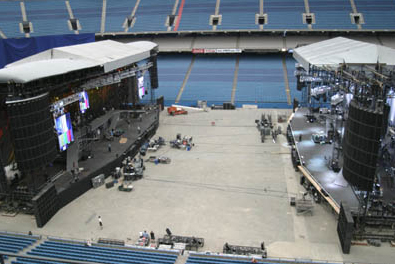
The stage design was wide open, seamlessly incorporating the full width of what would normally be unusable wing space, providing a playable dimension of 180 ft wide, 40 ft deep (out of a 70ft full depth), and a 60 ft visual height.
MAKING THE WIND MY FRIEND
Outdoor shows present a special set of problems, with the most dangerous (besides lightning) being the force of high-speed winds. If one is planning to use any type of backdrop, then the wind is your enemy. Wind can tear a backdrop to shreds in a few seconds, and if the backdrop is a “wind-opaque” surface the structural integrity of the stage towers and roof is in peril. Especially when the main backdrop dimension for this production will be more than 60ft wide and 40 ft high; plus other large backdrops on the wings to create the total 180 ft of fabric backgrounds.
In which case I decided to make the wind my friend, not my enemy… and three images came to mind:
– Salvador Dali’s costume design for “As You Like It”;
– A car dealer’s strings of triangular flags suspended from lines strung in the lot; and
– Billboards made up of thousands of mylar strips that become alive in the wind.
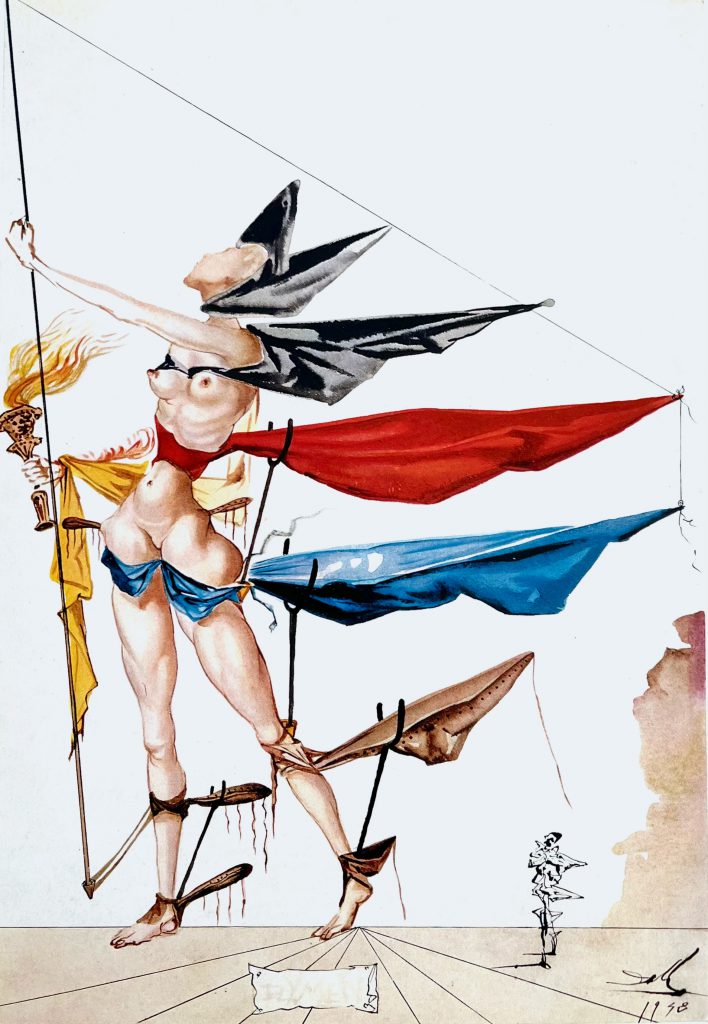
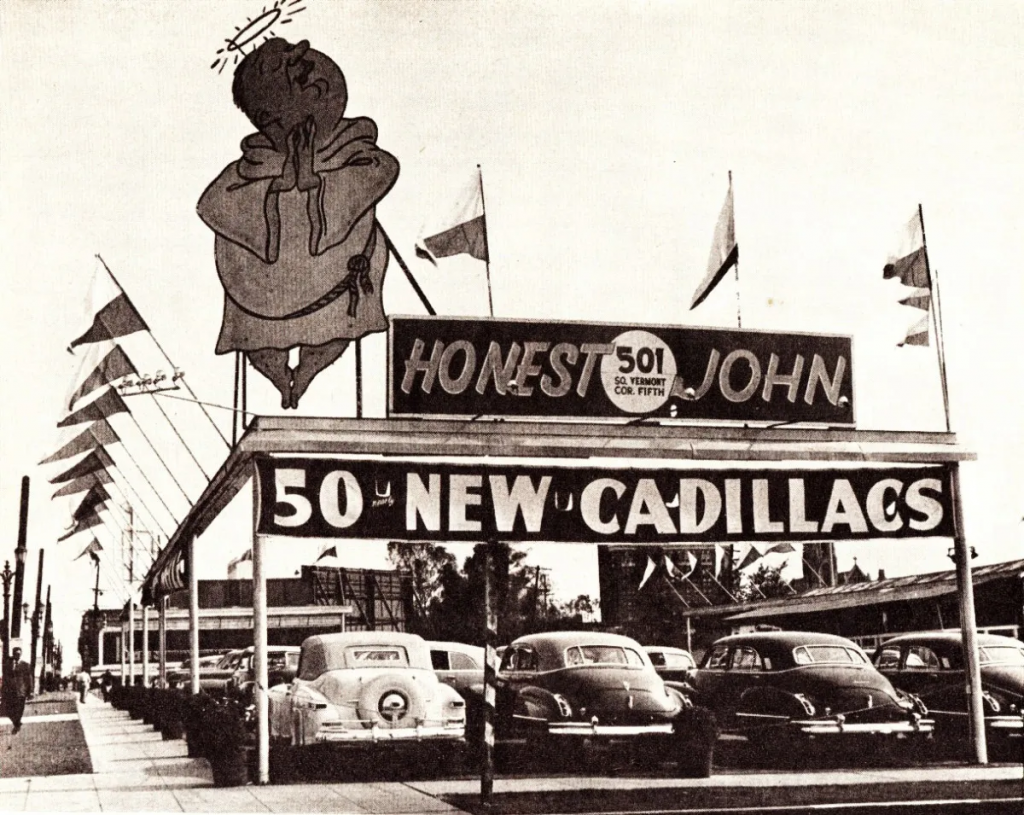

Designing on a grand scale
This is designing on a grand scale: parts of a stadium audience are often hundreds of feet away from the performers, so the design elements need to be oversized to create a spectacle which complements the energy of the music and the 40,000 person crowd.
I presented these ideas to the brilliant designer Mark Fisher, and this is what he created as the scenic backdrops (the crew members quickly named it “The Devil’s Car Wash”):
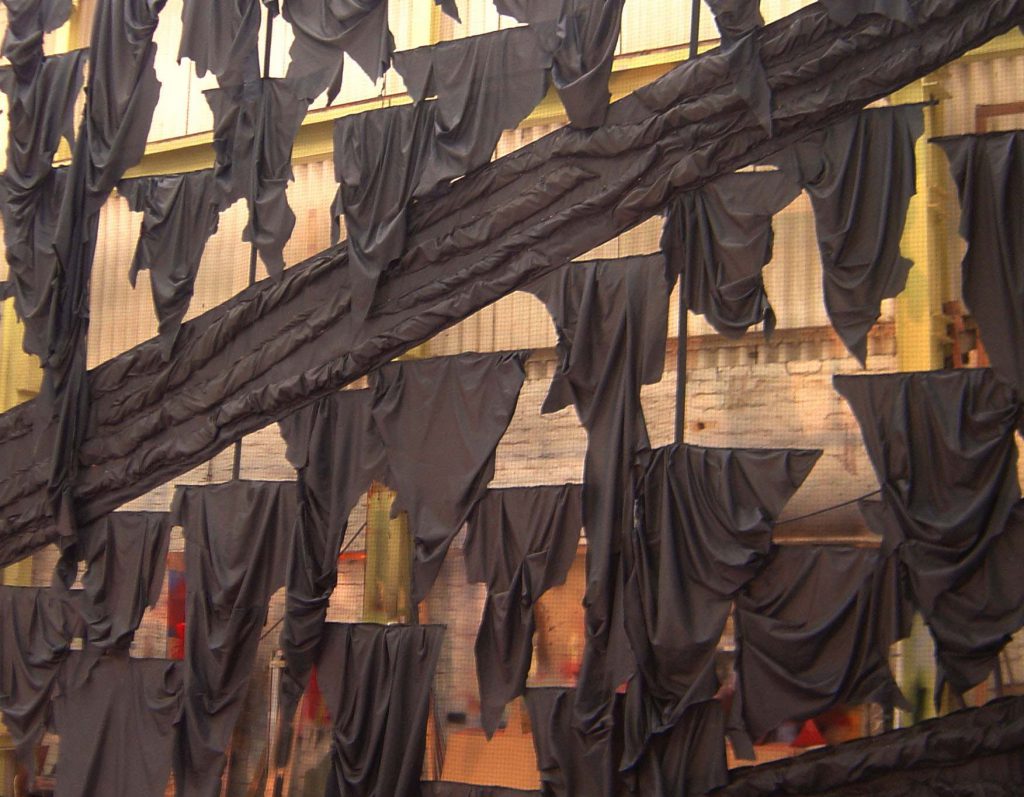
As soon as I saw Mark’s interpretation, where it was obvious even the slightest breeze would cause activity, and I knew then that the drops needed to be floating in front of a lit surface. Fortunately, the structure of an outdoor stage is usually fully wrapped with weather protection: Gray on the outside to reflect the sun, and black on the inside, which helps to create the theatrical “black-box” environment.
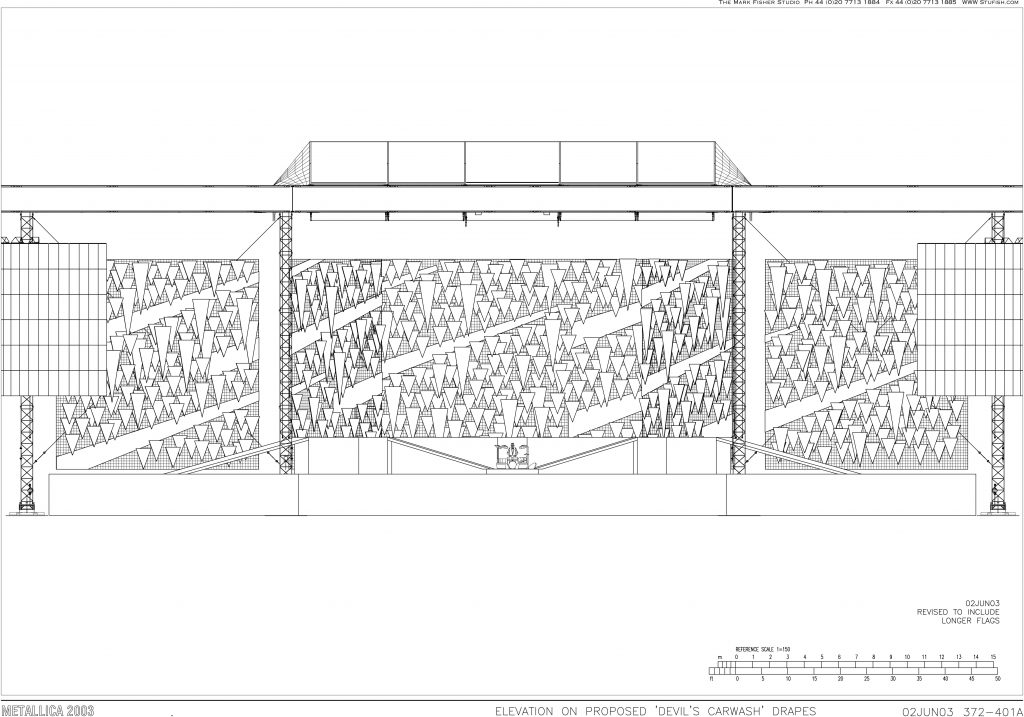
I asked that the weather protection materials be reversed, so the grey was on the inside. That allowed me to pour light in different colors onto the interior surfaces of the stage surrounds, thereby silhouetting the furiously waving flags against them.
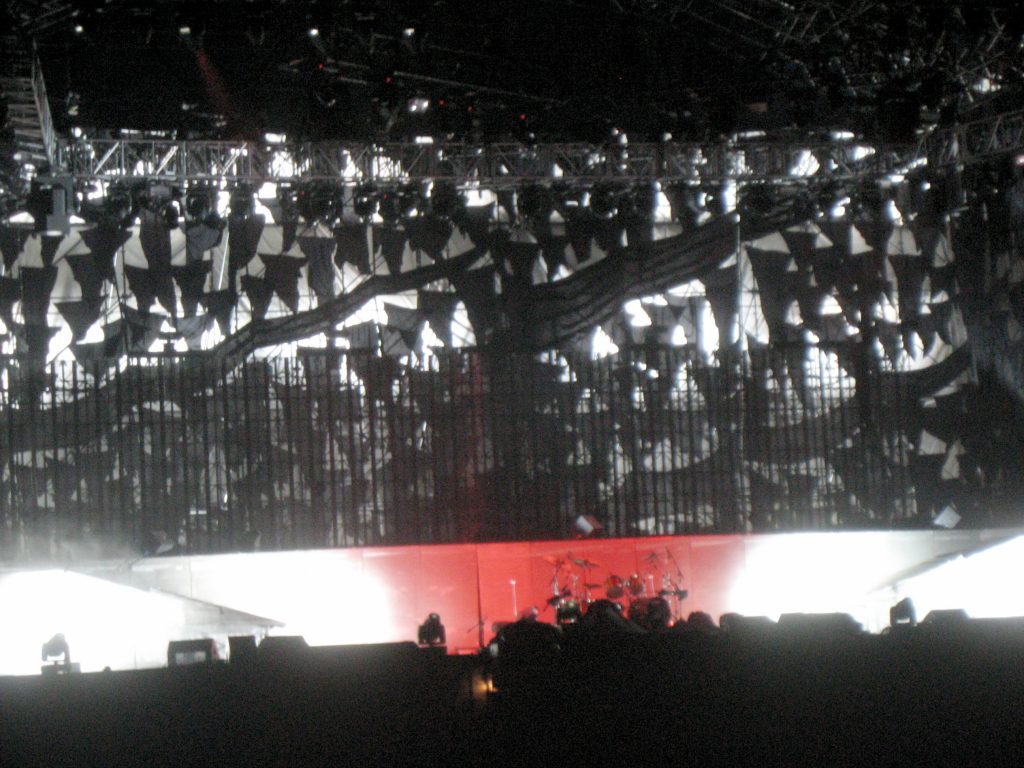
FORCED PROSPECTIVE
Then, using the Dali drawing as an influence, I designed a forced perspective vanishing point into the lighting grids, converging on an upstage left focus point.
Find the performer and note their size relative to the stage!
